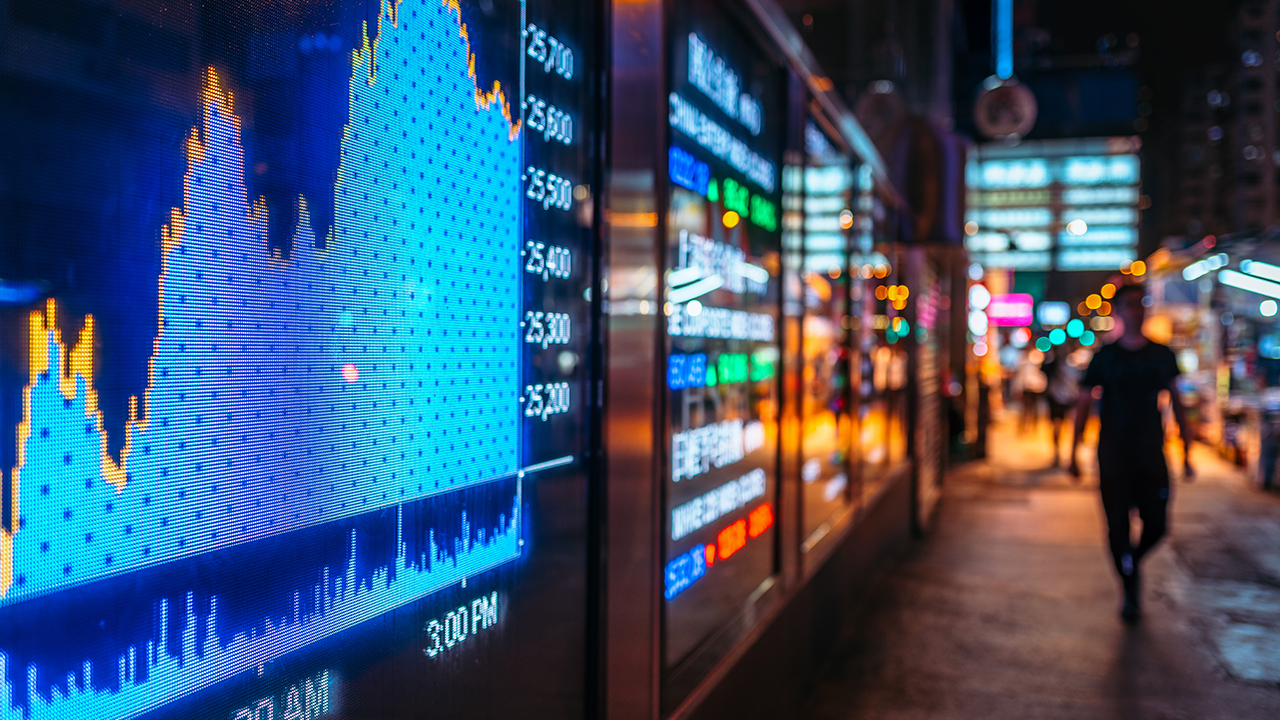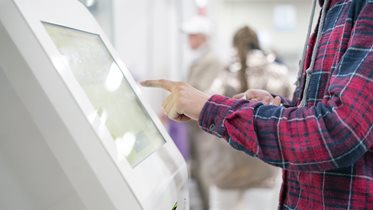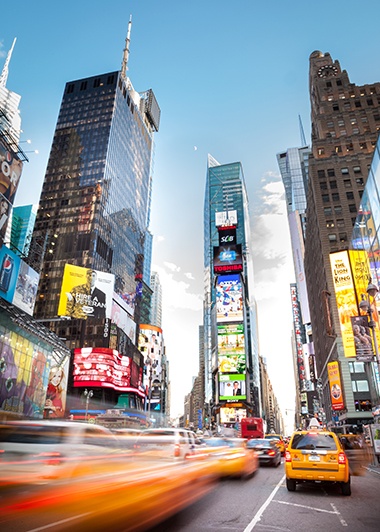There are few things as attention-grabbing as a large, colorful digital display. Driven by Internet of Things (IoT) technologies, applications in the digital signage industry are expanding rapidly. This is partly because the ability of digital signage applications in IoT to deliver rich imagery and engaging content has taken great leaps.
Another factor driving growth is that the potential applications for
digital signage have taken off, fueled by high-resolution graphical capabilities, lower costs for high-definition displays and cellular data plans, and the imagination of advertisers for what’s possible. Additionally, in a media-focused world, retailers and advertisers are always looking for ways to amplify their brand and products. An increased need for accurate, on-the-go information continues to spur the development of methodologies for delivering that information as well. And today, with the 5G rollout fully underway, the opportunities for streaming video in signage and displays are fully unleashed.
In this blog post we explore the varied and growing use cases for IoT digital signage.
Digital Signage and IoT: Indoor, Outdoor and On-the-Go
 The ability to provide real-time information delivery, branding and entertainment using eye-catching graphics and video, is enormous. And IoT capabilities enable operators and IT teams to remotely monitor and manage their displays — wherever they may be.
The ability to provide real-time information delivery, branding and entertainment using eye-catching graphics and video, is enormous. And IoT capabilities enable operators and IT teams to remotely monitor and manage their displays — wherever they may be.
Digital signage applications in IoT appear wherever we go today — from interior, temperature controlled digital displays and touch screens in airports, sports arenas, convention centers and schools, to outdoor signs in city centers to informational displays on buses and light rail systems.
The technology at work behind those displays includes many different IoT devices, including:
- Sensors
- Radio devices
- Cellular modules
- Gateways
- Cellular routers
And the devices must be designed to suite the purpose — for example, the powerful Digi EX50 5G for interactive indoor signage, the rugged industrial Digi IX20 for outdoor displays, and the high-speed Digi TX64 5G mobile access router for digital signage in transportation systems.
The market for indoor digital displays alone is diverse — including everything from roadside advertising to informational displays in shopping malls to digital self-serve kiosks and even personal digital greeters, as we will share in our customer use cases.
 In outdoor applications of digital signage, we are all familiar with highway billboards — which are increasingly digital and therefore designed to change and update rapidly — as well as the big, bright displays in city centers such as Times Square, Las Vegas and downtown Tokyo. But the outdoor digital signage industry is far greater than those top-of-mind examples, encompassing mapping and infotainment in transit stations, displays at ATMs and fuel pumps and signage at road construction sites.
In outdoor applications of digital signage, we are all familiar with highway billboards — which are increasingly digital and therefore designed to change and update rapidly — as well as the big, bright displays in city centers such as Times Square, Las Vegas and downtown Tokyo. But the outdoor digital signage industry is far greater than those top-of-mind examples, encompassing mapping and infotainment in transit stations, displays at ATMs and fuel pumps and signage at road construction sites.
Then there’s the mobile market, where video streaming travels with the viewer. For example, graphical displays on public transportation include both practical transit routing information as well as business branding and advertising opportunities. And remember when a flight attendant stood in the aisle to deliver the pre-flight information about emergency preparedness? Now you’ll typically see that same information delivered as an in-flight video, along with some airline branding and feel-good messaging.
The IoT is at work today in all of these use cases. For example, IoT sensors detect brightness levels to adjust automatically for conditions. Temperature sensors ensure internal components are not over-heating.
Case Study Examples: Digital Signage IoT Applications
 Applications of IoT in digital signage many different IoT-based applications and use cases for digital signage include:
Applications of IoT in digital signage many different IoT-based applications and use cases for digital signage include:
- Branding signage that puts your company name and logo in front of viewers and passersby
- Directories and wayfinding applications to guide visitors to their destinations
- Roadside alerts and emergency messages for motorists
- Event announcements and venue information
- Time-sensitive promotions within brick-and-mortar retail stores
- Interactive touchscreens for information or transaction kiosks
- Employee information displays, showing company social media or metrics such as sales wins
- Retail and hospitality - displaying menus, events and entertainment
- Public transit schedules, showing real-time updates
- Welcome messaging to greet arriving travelers or customers
- Holographic virtual greeters
Digi works with many different customers and partners, from development groups in large organizations to systems integrators to startups and entrepreneurial application developers. The following are a few examples from our collection of case studies demonstrating the need for IoT in displays and digital signage.
How Wondersign Solved Digital Signage Connectivity Issues
 Wondersign is a full-service solutions provider of IoT digital signage, catalog kiosks, digital poster boards, and ambient television. “Whether it’s in-store or on-campus, digital signage can dramatically improve an organization’s communications, marketing, and sales,” says Andy Reinhard, CEO of Wondersign. “For instance, a pharmacy’s ability to install digital signage in hundreds of retail stores and change their promotions and pricing at all locations with a single click of the mouse is a powerful way to increase customer engagement and revenue.”
Wondersign is a full-service solutions provider of IoT digital signage, catalog kiosks, digital poster boards, and ambient television. “Whether it’s in-store or on-campus, digital signage can dramatically improve an organization’s communications, marketing, and sales,” says Andy Reinhard, CEO of Wondersign. “For instance, a pharmacy’s ability to install digital signage in hundreds of retail stores and change their promotions and pricing at all locations with a single click of the mouse is a powerful way to increase customer engagement and revenue.”
Examples of Wondersign digital signage applications include:
- Interactive kiosks that enable shoppers in a retail setting to scan available merchandise, view up-to-date choices and place orders on the spot
- Wayfinding digital signage in a hospital that points out directions to various clinics
- In a corporate campus, digital displays that offer reminders about Covid-related office policies or progress reports on campus construction projects
- Displays in a college student union to show highlights of the previous night’s basketball game and signup schedules for the next semester’s classes
- A rotating series of digital posters outside an entertainment venue to promote upcoming events
But Wondersign faced an issue with connectivity. “We had sophisticated panels and displays and software — but we relied on a mixture of hardwired connections and Wi-Fi supplied by the customer. That meant unreliable bandwidth, restrictive firewalls, IT audits, and policy exceptions. As a result, our deployments could get delayed by months — if we were even approved. We were losing sales because we were completely dependent on someone else for our cloud connection,” Reinhard said. “We learned very quickly, you can’t just deliver components. Companies want turnkey solutions that are easy to install and maintain, and that became our focus.”
So Wondersign turned to Digi and the Digi WR11 cellular-router (now superseded by Digi IX20). Digi routers provide reliable, cost-effective 4G LTE connections linking Wondersign displays to the cloud. “By operating securely outside of the customer’s infrastructure, we bypass all of the delays and obstacles to our deployments,” Reinhard explained. “With the preloaded Digi routers, we don’t need to be on the customer’s network. We just plug it in, check the antennas, and are literally up and running in a day.”
Digital Out-Of-Home Advertising
 When Monster Media, a full-service media company in the digital out-of-home (DOOH) advertising space reached out to Digi, they found the complete solution they needed.
When Monster Media, a full-service media company in the digital out-of-home (DOOH) advertising space reached out to Digi, they found the complete solution they needed.
The company specializes in dynamic, interactive media for high-traffic locations. Monster Media's displays appear worldwide in storefronts, convention halls, sports stadiums, hotels, entertainment venues, transit stations and on city buses. Monster Media also carries out interactive campaigns with such clients as Coca-Cola, HBO, The Walt Disney Company and Universal Studios.
The company needed a connectivity solution that would provide reliable, high-quality service. Wi-Fi was problematic due to reliability issues, since Wi-Fi internet connections can easily become overloaded. Additionally, security is always a concern with Wi-Fi. Wired LAN connections were ruled out due to the high cost of landline installations and the lack of scalability.
The ideal solution was cellular, for several key reasons:
- Cellular routers are easily to install, as they are dropped in locally
- Routers can be positioned anywhere in a building for best reception, and are far less bulky and visible than a satellite dish
- Because of their small size, they are an easily scalable solution
- For reliability, customers can choose dual-SIM options that provide failover to a backup cellular carrier in the event of a service interruption with the primary carrier
Customers seeking cellular solutions from Digi now have an added benefit: a new generation of routers that can simultaneously support multiple digital signs as a very cost-effective choice.
Monster Media equipped every station with a Digi WR21 cellular router (now superseded by Digi IX20) connected via a Verizon cellular network. From their network operations center, Monster Media runs a Digi VPN concentrator to all of their displays for secure connectivity.
With the Digi router and Digi Remote Manager® in place, the company can monitor the health of their platforms around the world and remotely update their signage at any time. Thanks to the scalability of the Digi solution, the company can easily manage thousands of media displays with a secure cellular connection.
PRSONAS: Virtual Greeter
PRSONAS is an innovative company that develops holographic greeters for a range of applications designed to enhance the visitor and customer experience. The holograms are multi-lingual, and the company has also added an American sign language capability. PRSONAS displays can be used as:
- Virtual receptionists: Guide visitors to information such as a staff directory or introductory video.
- Product specialists: Describe product features to help answer shoppers’ questions in a retail setting or at conventions or trade shows.
- Virtual concierge: Delivers self-service applications and checks in visitors at hotels and car rental agencies.
PRSONAS smart virtual presenters use artificial intelligence and computer-generated visual technologies to interact with customers. The virtual presenters can deliver marketing messages, provide customer support, and perform transactions virtually anywhere, anytime and in any language.
The holograms can also be integrated with interactive digital signage, where users can make selections or enter data such as their email address. The holograms can then automatically follow up with the prospective customer via email once the interaction is complete.
One of the greatest difficulties PSRONAS faced early on was reliable connectivity. Because the technology is designed for real-time interactivity, downtime or even slow connections were not acceptable.
When trying to demonstrate their holograms at enterprise sites during the sales process they sometimes found that the system could become bogged down as they tried to connect to the customer’s Wi-Fi. The prospective customer’s security policies and firewalls sometimes prevented a successful installation, occasionally derailing the sales opportunities.
So, PRSONAS worked with Digi to identify the right connectivity solution, and chose the Digi WR11 (now superseded by
Digi IX20), a cellular router that provides 4G LTE for IoT applications. Excellent bandwidth and reliable connectivity were key objectives to ensure that the holograms performed optimally. Additionally, the company wanted the ability to provide remote updates.
"We rely on Digi for remote access to any PRSONAS unit in the field," said David Rose, chief executive officer of PRSONAS. "We can push any software update or perform basic troubleshooting and support services from our location. Some of these updates can be very large, so we need lots of fast and reliable bandwidth. And since all of our presentation is CGI, not shot on green-screen video, we can change offers and the user experience on demand. We’re constantly sending new updates and we can push those over the cloud in less than a minute."
Leightronix: Remote Digital Signage Connectivity
LEIGHTRONIX provides solutions for managing media, including digital video solutions, video-on-demand web streaming media and remote equipment control.
Sign owners want to be able to efficiently update and manage their digital signage remotely, from a centralized location. Ensuring reliable connectivity for those tasks was an enormous challenge. Depending on the location, and even the customer’s industry, the barriers can be significant.
"For instance," explained David Leighton, President and CEO of LEIGHTRONIX, "retailers need to comply with the PCI (Payment Card Industry) standard, which restricts the traffic they allow onto their networks. Others simply have a policy of not allowing any outside traffic on their Wi-Fi networks. That meant we had to find a way to create our own private network to update and manage signage."
LEIGHTRONIX initially used Digi for cellular routers to provide cost-effective 4G LTE connections. The company then expanded to include connectivity with Digi XBee® cellular modules. These flexible, pre-certified radio modules are easy to deploy, and make it possible to switch between multiple frequencies and wireless protocols as needed. Additionally, they are integrated with Digi Remote Manager®, which enables easy configuration and control from a management dashboard.
With Digi XBee cellular modules embedded in its digital signs, LEIGHTRONIX can offer its customers a drop-in, end-to-end solution that provides fast, cost-effective updates and the ability to fully manage their signage remotely.
To learn more about digital signage applications and Digi technologies, visit our digital signage web page or download the Digital Signage and Interactive Kiosks solution brief.
Or contact us to start a conversation about how Digi solutions and IoT design and deployment services can help you roll out your next IoT signage project.